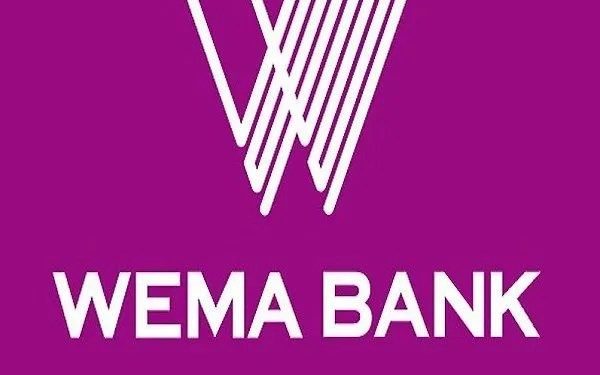In the ever-evolving landscape of Nigeria’s financial markets, one name has consistently stood out in recent years Wema Bank. Once regarded as a mid-tier player in the industry, Wema has defied expectations, recording one of the most remarkable stock rallies in Nigeria’s banking sector. As of September 12, 2025, the bank’s share price has surged by 139.56% year-to-date, significantly outperforming the NGX All-Share Index, which rose 36.55%, and the NGX Banking Index, which climbed 40% over the same period. This builds on equally stunning performances in the two preceding years, with a 171% gain in 2024 and a 47% gain in 2023. Clearly, Wema Bank has cemented its reputation as the star performer of Nigerian banking equities.
At the heart of this impressive growth is a confluence of strong financial performance, regulatory foresight, and strategic innovation. Wema’s half-year 2025 results reveal just how transformational its journey has been. The bank reported a profit before tax of ₦101.2 billion, representing a staggering 231% increase compared to ₦30.55 billion in the first half of 2024. Gross earnings expanded by about 70% to ₦303.20 billion, with both interest income and non-interest income recording double-digit growth. Interest income grew by nearly 65%, while non-interest income—including fees, commissions, and trading gains—jumped by 91%. Such performance has not only reassured existing investors but also attracted new market participants eager to ride on Wema’s momentum.
Beyond its earnings, Wema’s balance sheet tells another story of resilience and growth. Total assets rose to ₦3.963 trillion in the first half of 2025, up from ₦3.585 trillion the previous year. Loans and advances expanded by about 19%, while deposits also grew, albeit more modestly. Importantly, the bank has managed to balance aggressive growth with prudent risk management. Its Non-Performing Loan ratio currently stands at 3.17%, a figure that indicates sound credit quality in a challenging macroeconomic environment.
A crucial driver of Wema’s rise has been its proactive approach to regulatory demands. The Central Bank of Nigeria has mandated that all banks meet higher capital requirements by March 2026. Wema responded ahead of schedule, completing a ₦150 billion rights issue that boosted its qualifying capital to ₦214.7 billion—well above the ₦200 billion threshold. By meeting this requirement early, the bank not only strengthened its capital base but also signaled confidence to both regulators and investors. This foresight has given it a competitive edge over peers still scrambling to shore up their balance sheets.
Another factor underpinning Wema’s success is its investment in digital innovation. The bank’s flagship digital platform, ALAT, has redefined how Nigerian consumers interact with banking services. By leveraging technology to deliver seamless, cost-effective, and customer-centric solutions, Wema has managed to attract a younger, tech-savvy demographic while reducing its reliance on costly physical infrastructure. The bank’s emphasis on retail banking and low-cost deposits has further boosted profitability, enabling it to diversify revenue streams and maintain resilience in the face of fintech competition.
The macroeconomic environment has also played a role. Higher interest rates have widened banks’ margins by increasing returns on loans and government securities. Wema, with its expanding loan book, has been well positioned to take advantage of this. At the same time, Nigeria’s rising inflation and volatile foreign exchange markets remain risks, but so far Wema has demonstrated an ability to navigate these challenges better than many of its peers.
For investors, Wema’s performance offers both promise and caution. On one hand, its fundamentals—rapid earnings growth, solid asset quality, strong capital buffers, and innovative digital strategy—justify much of the optimism around its stock. On the other hand, the meteoric rise in share price raises questions about sustainability. Valuations, while still modest compared to global peers, could begin to stretch if earnings growth slows. Additionally, external risks such as regulatory shifts, inflationary pressures, or economic shocks could dampen momentum.
What lies ahead for Wema Bank is a critical question. If it can sustain its double-digit income growth, maintain asset quality, and keep capital levels comfortably above regulatory thresholds, it is well positioned to remain a market leader. Its early recapitalization means it has the financial muscle to expand lending, deepen its digital offerings, and possibly pursue strategic partnerships or acquisitions. Yet, investors must remain vigilant: the very factors that have fueled Wema’s rise—such as aggressive growth and digital expansion—could pose risks if not carefully managed.
In conclusion, Wema Bank’s story is a powerful case study of how vision, discipline, and innovation can transform a financial institution from a mid-tier player into a market darling. Its success highlights broader trends reshaping Nigeria’s banking sector, from regulatory pressures to digital adoption and investor appetite for growth stocks. While questions remain about how long this momentum can be sustained, one thing is clear: Wema Bank has set a new benchmark for performance in Nigeria’s banking industry.























































